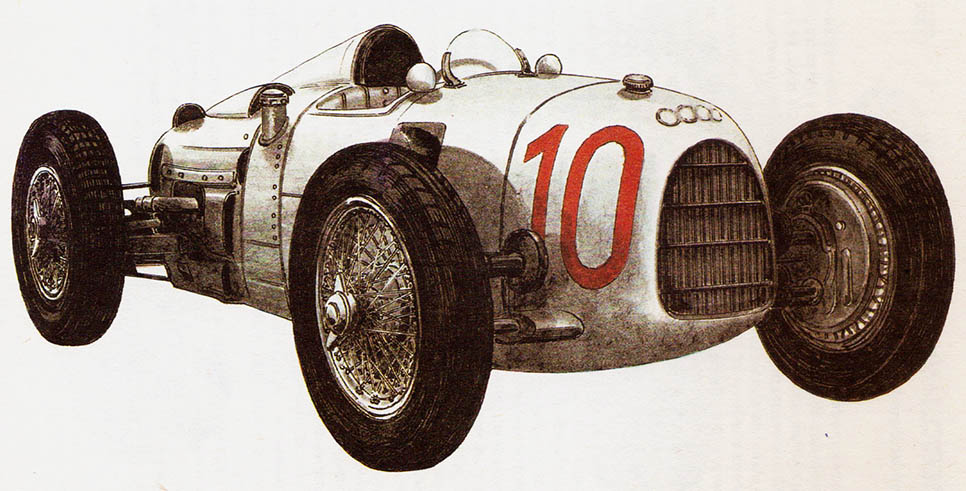AUTO UNION A – year 1934
AutoUnion AG, Zschopau, Germany.
In the early 1930s, the car industry found itself in a crisis. Some companies went bankrupt, others merged with the stronger. Companies Horch, Wanderer, DKW and Audi formed the village of 1932 Auto Union concern. The concern's representatives asked Ferdinand Porsche, owner of a design office in Stuttgart, about designing a racing car. Already in 1933 On the year, Porsche unveiled a design for a car called "P-Wagen”, which was produced at the Horch factory in Zwickau.

AutoUnion AG, Zschopau, Germany.
Model, produced under the name Auto Union A., It was equipped with an original sixteen-cylinder V-engine located between the driver and the rear axle. Capacity engine 4360 cm3 (∅ 68 x 75 mm) formed one unit with a differential and a five-speed gearbox, attached to the other side of the rear axle. This concept was later adopted by almost all formula cars 1. One camshaft, located above the cylinder heads, was opening 32 valves. The Roots compressor compressed the mixture from the two Solex carburettors to pressure 160 kPa and forced it into the cylinders. At the compression ratio 7 : 1 the engine was running 217,1 kW (295 KM) by 4500 RPM. The cylinder block and heads are made of light alloy. There were metal so-called. wet cylinder liners. Type A crankshaft, forged from one piece of chromium-nickel steel, it rotated in bronze plain bearings.
A simple chrome-molybdenum tubular frame had independently suspended wheels on double wishbones at the front. The lower rocker arms were connected to transverse torsion bars arranged across the frame, the upper ones are equipped with frictional vibration dampers. The rear wheels were suspended on oscillating shafts with a transverse semi-elliptical leaf spring. Hydraulic drum brakes are cooled by directed airflow. The Rudge-Whitworth wheels are fitted with Continental tires of the dimensions 5,25 x 17 on the front and 6,50 x 19 in the back.
Porsche, despite the big, sixteen-cylinder engine, met the condition of the maximum allowable mass, reaching the rest mass 1090 kg. The car developed its maximum speed 280 km/h. The driver of Auto Union, Hans Stuck, was the most successful, which in 1934 of the year he won the German Grand Prix at the Nurburgring track (122,9 km/h), the first Swiss Grand Prix race in Bern (140,3 km/h), and with the first place in the Czechoslovakian Grand Prix in Brno, he interrupted Chiron's series of victories at the Masaryk circuit.